Banana rust thrips Chaetanaphothrips signipennis General information
Occurrence
Banana rust thrips is a serious and frequent pest of bananas and has been since they were first grown in Queensland. Damage occurs in all areas but is more severe in bananas grown in well-drained red soils.
Seasonality
Rust thrips can damage fruit throughout the year however, the period from November to April is the period of greatest activity. Experience has shown that unusually dry periods during November and April encourage heavy build-ups of thrips and subsequent damage. Wet conditions are thought likely to cause high mortality of the soil-dwelling pupal stage, either directly from drowning or by encouraging the development and spread of diseases.

Description and life cycle
The extremely small eggs are inserted by the female just below the surface of the fruit or other plant tissues. The small (0.5–1.0 mm long) white, slender larvae do not have wings and can be seen moving when areas of infestation are exposed by separating touching fruit. Larvae can also be seen moving on the stem of the plant by pulling back the edge of leaf sheaths. When fully developed, the larvae drop to the ground and pupate just below the soil surface, approximately 30 cm from the base of the plant and suckers. The white pupa is about 1mm long and can be very difficult to find.
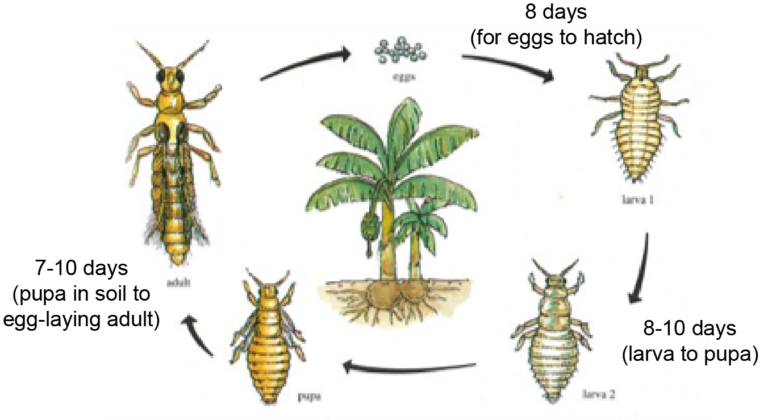
The adult has small feather-like wings and is a slender (1–1.5 mm) straw-coloured insect. The wings are fringed with a line of dark scales and, when at rest along the body, these scales form a characteristic black longitudinal line running the length of the abdomen. Two eye-like dark patches at the base of the wings are a characteristic of rust thrips adults. These patches help distinguish them from the smaller males of banana flower thrips.
Damage
Fruit damage is caused during feeding by the larval and adult stages of the thrips. The damage first appears as a faint smudge-like mark (Figure 3) between the fingers in the area where two adjacent fingers touch (Figure 4). This later develops into typical reddish-brown ‘rust’ areas. Severe damage can result in skin cracking (Figures 5 & 6).
The superficial damage does not reduce the fruit eating quality. However, affected fruit can be downgraded or rejected, depending on the severity of damage and the current market supply conditions.
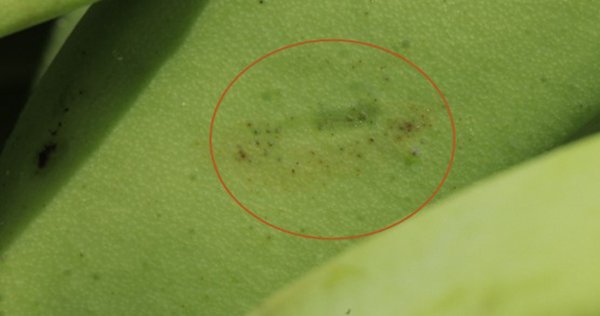
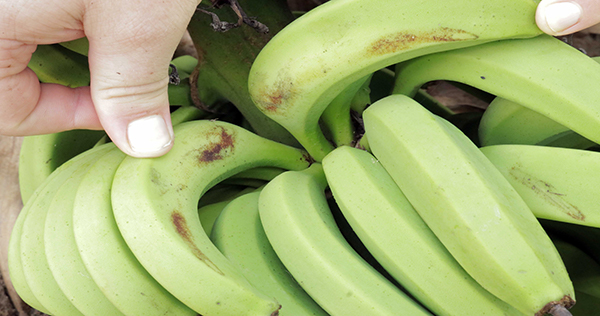
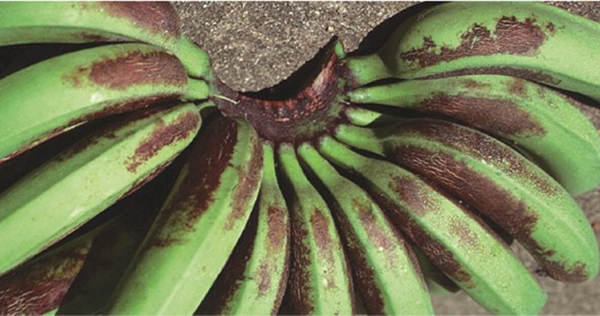
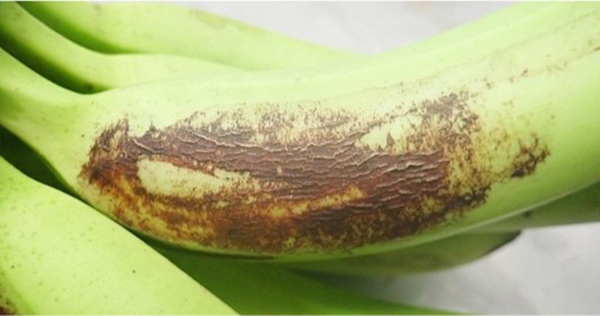
Note: Rust thrips damage should not be confused with maturity bronzing, which produces a rusty, reddish discolouration on the fingers. While it appears similar to rust thrips damage, maturity bronzing occurs on the exposed outer curve of the fruit and is not confined to areas where fingers are touching.
For more information contact:
The Better Bananas team
Department of Agriculture and Fisheries
South Johnstone
07 4220 4177 or email betterbananas@daf.qld.gov.au
This information is adapted from: Pinese, B., Piper. R 1994, Bananas insect and mite management, Department of Primary Industries, Queensland
This information has been updated as part of the National Banana Development and Extension Program (BA19004) which is funded by Hort Innovation, using the banana industry research and development levies and contributions from the Australian Government. Hort Innovation is the grower-owned, not-for-profit research and development corporation for Australian horticulture. The Queensland Government has also co-funded the project through the Department of Agriculture and Fisheries.


